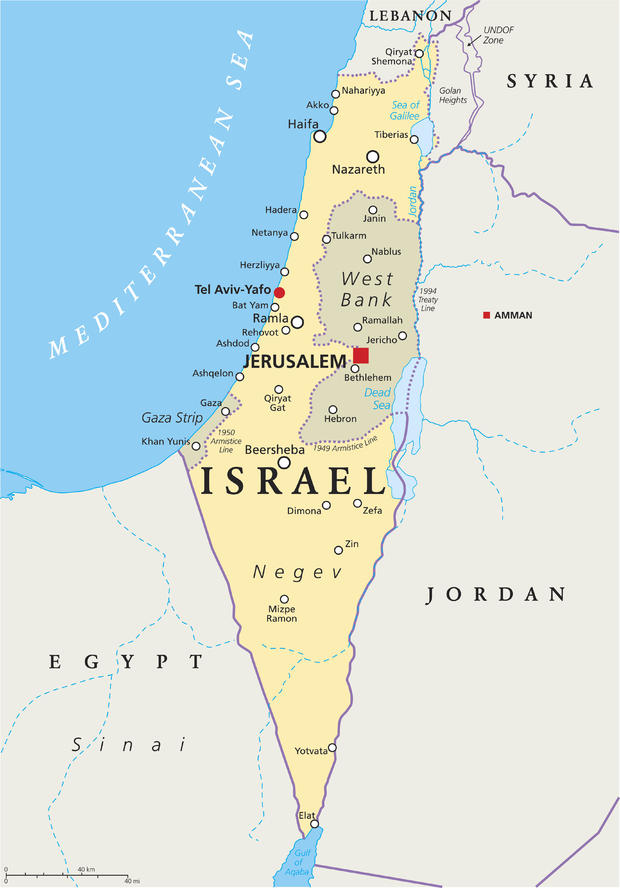This Post Is Recently Updated on Oct 29, 2023 @ 9:00 am by TBB Desk
Israel continued its airstrikes on Hamas targets in Gaza on Friday while beginning the evacuation of a town near its northern border with Lebanon due to frequent clashes with Hezbollah, another major Iran-backed group in the region. The ongoing conflict, ignited by a deadly attack from Hamas nearly two weeks ago, is raising concerns of widening hostilities.

The Israeli military holds Hamas responsible for approximately 1,400 deaths and at least 203 hostage takings during the conflict. Among the hostages are Israeli soldiers and civilians, including up to 20 individuals aged over 60 and more than 20 minors. The anguish of a family awaiting news of a 10-month-old baby held captive was shared with CBS News on Friday.
A one-hour special titled “Israel-Hamas War: The World on Edge” is scheduled to air on CBS and CBS News Streaming platforms on Friday, Oct. 20 at 10 p.m. ET. Viewers can access the broadcast via the CBS News app on mobile devices or smart TVs.
A high-ranking Israeli military official hinted at a forthcoming ground invasion of Gaza, further fueling concerns of the conflict’s expansion beyond Israeli and Palestinian territories.
Iran-Backed Allies and Escalation Concerns:
Hezbollah’s deadly exchanges with Israeli forces over the past week, although mostly limited to cross-border artillery fire, have intensified tensions. The Iran-supported group, based in Lebanon, boasts a significant arsenal of long-range rockets.
On Friday, Israel’s Defense Ministry announced the evacuation of around 20,000 residents from the town of Kiryat Shmona, located near the Lebanese border.
The Houthi movement, another militant faction considered an Iranian proxy by the U.S. and Israel, has been engaged in a brutal civil war against Yemen’s Western-allied government for nearly a decade. Recently, a U.S. Navy destroyer intercepted Houthi-launched cruise missiles and drones in the Red Sea, possibly aimed at Israel, marking a potential first direct U.S. military intervention to protect Israel from regional adversaries since the Hamas attack.
Meanwhile, a new rocket attack targeted a U.S. military base near Baghdad, Iraq. The frequency of attacks on U.S. bases in Iraq and Syria by drones has surged since the Israel-Hamas conflict erupted, with Iran-backed militias in northern Iraq and Syria often targeting American forces.
President Biden has issued stern warnings to Iran and its regional allies against intervening in the Israel-Hamas war.
Unrest in the West Bank and Egypt:
The West Bank has witnessed a surge in Israeli-Palestinian clashes, with over 70 lives lost in confrontations since Oct. 7. On Friday, a rare Israeli airstrike in the region reportedly hit a refugee camp near the West Bank-Israel border, killing 13 people, and causing growing outrage over the continued bombardment of Gaza.
A demonstration in central Ramallah on Friday saw hundreds protesting Israel’s airstrikes in solidarity with Palestinians in Gaza. The crowd, displaying Palestinian and Hamas flags, voiced support for Hamas and criticized American backing of Israel.
In Egypt, despite a ban on protests, a significant demonstration occurred in central Cairo’s Tahrir Square on Friday. Pro-Palestinian protests were not only permitted but encouraged in other parts of the city.
Gaza Air Strikes and Rafah Border Crossing:
On Friday, the Israeli military targeted over 100 Hamas sites in Gaza, including command centers, weapon storage facilities, and an underground tunnel. The United Nations reported that over one million people have been displaced within Gaza since Israel commenced its airstrikes following Hamas’ Oct. 7 attack.
The blockade on Gaza has halted the supply of essential resources like food, energy, and medicine, exacerbating the humanitarian crisis amidst the ongoing shelling.
Israel’s Plan in Gaza:
Israeli Defense Minister Yoav Gallant outlined a three-phase operation to the Foreign Affairs and Defense Committee of the Knesset on Friday, with the ultimate goal of eliminating Hamas’ power in Gaza. The operation involves a military campaign to neutralize terrorists and destroy Hamas infrastructure, followed by a phase focused on eliminating resistance pockets, and ultimately the establishment of a new “security reality” in the Palestinian territory.










